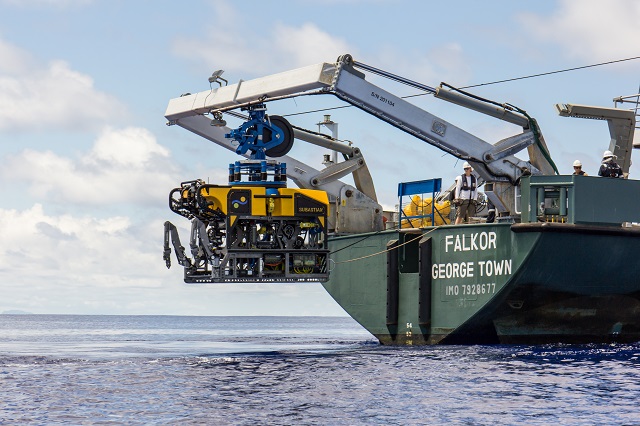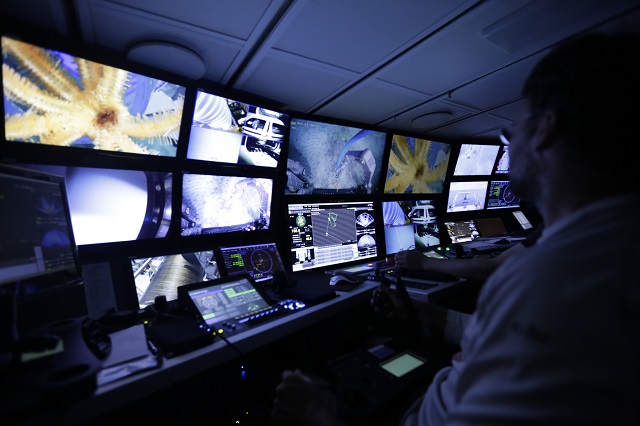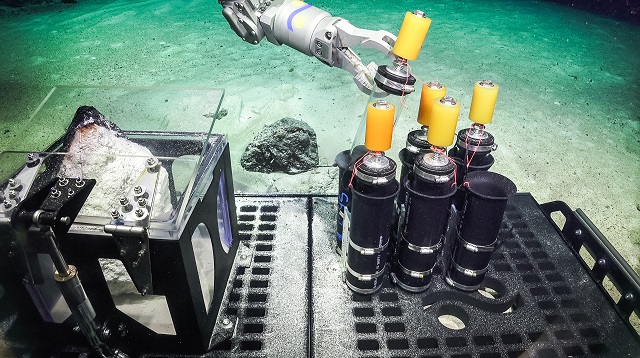Deepwater ROV Ready for Scientific Discovery
U.S.-based Schmidt Ocean Institute has completed tests of its new Remotely Operated Vehicle (ROV) SuBastian in the open ocean off the island of Guam in the western Pacific.
The 25-day test was conducted from on board the 272 foot oceanographic research vessel Falkor and involved 22 dives and more than 100 hours underwater. Next year, the ROV will be used to study the Mariana Back-Arc in Guam. The 4K high-resolution video footage collected with SuBastian will be openly shared with scientists and interested public around the world. The ROV is connected to an umbilical tether that powers and transfers data for live video telepresence operations, resulting in SuBastian’s ability to potentially stay submerged and explore for multiple days at a time.
 The ROV is designed to go to depths of 4,500 meters (2.8 miles), and will be suitable to support high resolution seafloor mapping, photo-mosaicing, video and image gathering, and collections of rocks, animals, and seawater samples. SuBastain is equipped with a versatile array of power and data interfaces to enable integration of a wide range of add-on deep sea instruments and samplers that oceanographers may need to support their deep sea research.
The ROV is designed to go to depths of 4,500 meters (2.8 miles), and will be suitable to support high resolution seafloor mapping, photo-mosaicing, video and image gathering, and collections of rocks, animals, and seawater samples. SuBastain is equipped with a versatile array of power and data interfaces to enable integration of a wide range of add-on deep sea instruments and samplers that oceanographers may need to support their deep sea research.
 Wendy Schmidt, co-founder of Schmidt Ocean Institute has watched SuBastian go from concept to a full-functioning vehicle, “With ROV SuBastian, we will help make life on the ocean floor real to people who will never visit the sea, so they, too, can begin to appreciate the importance of ocean health and make the connection between life in the deep sea and life on land. You don’t have to be a scientist at sea to recognize the importance of the marine environment, and we are only at the beginning of our understanding. We never anticipated discovering the world’s deepest living fish, the ghostfish, back in 2014, and are excited about the life we will discover next.”
Wendy Schmidt, co-founder of Schmidt Ocean Institute has watched SuBastian go from concept to a full-functioning vehicle, “With ROV SuBastian, we will help make life on the ocean floor real to people who will never visit the sea, so they, too, can begin to appreciate the importance of ocean health and make the connection between life in the deep sea and life on land. You don’t have to be a scientist at sea to recognize the importance of the marine environment, and we are only at the beginning of our understanding. We never anticipated discovering the world’s deepest living fish, the ghostfish, back in 2014, and are excited about the life we will discover next.”

